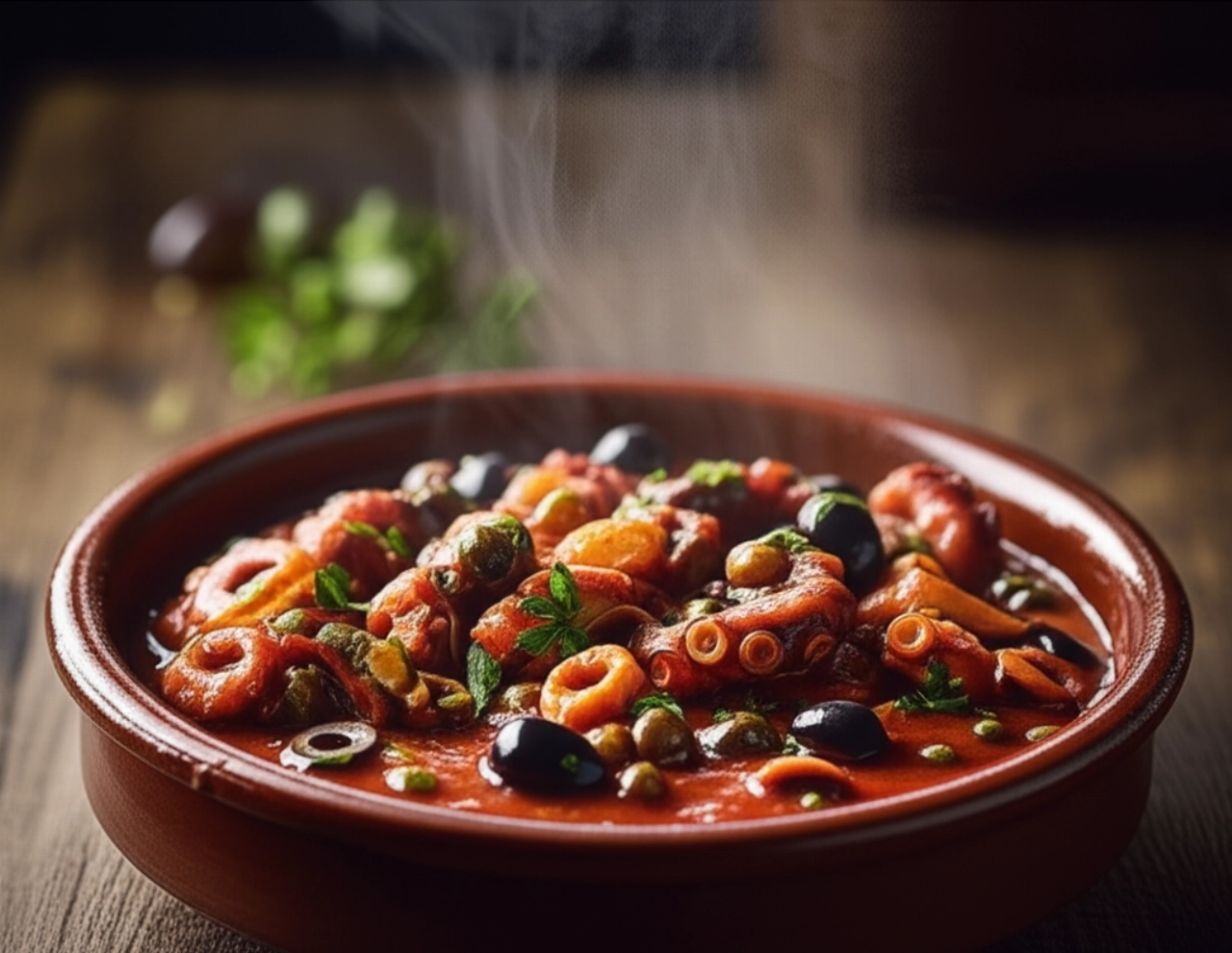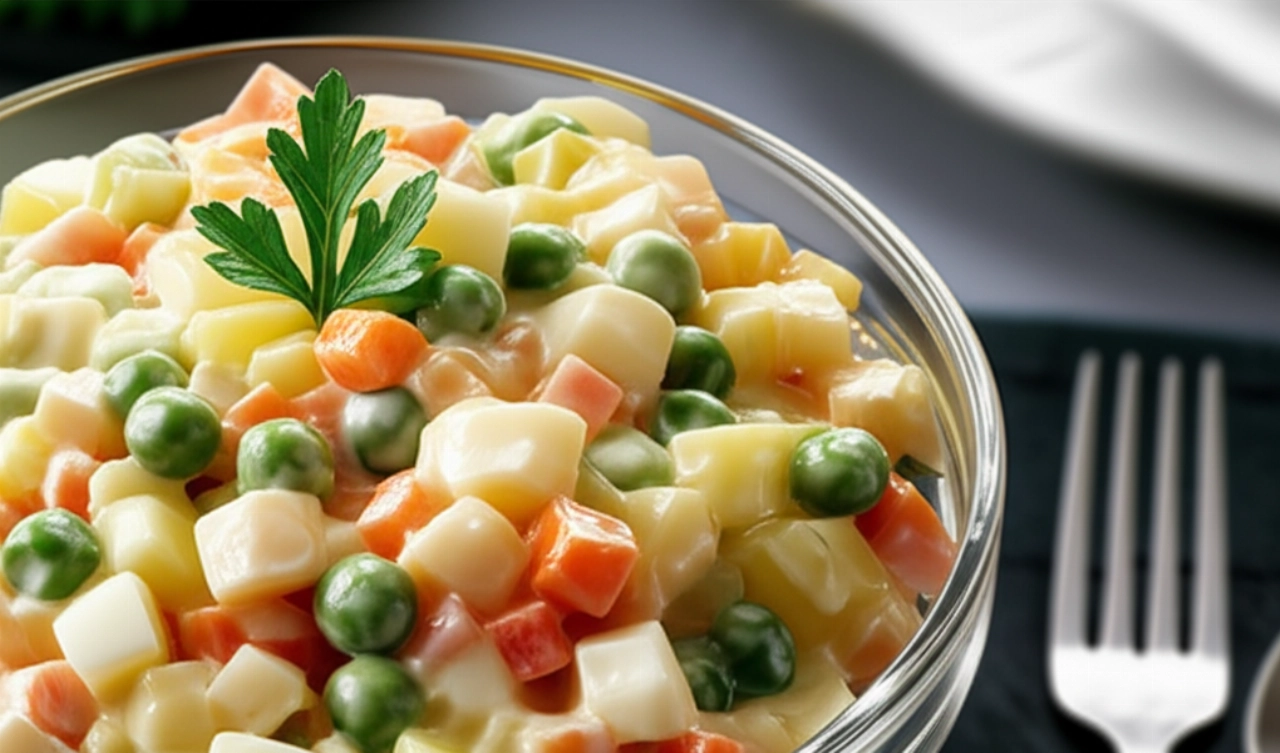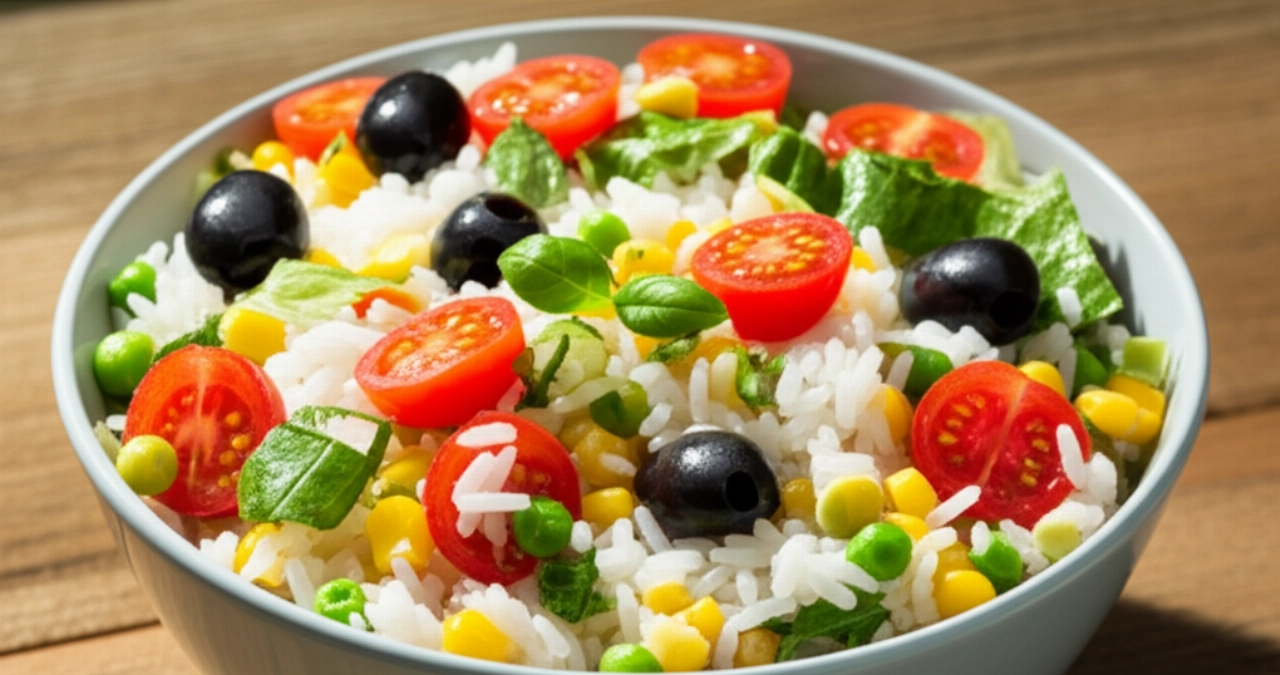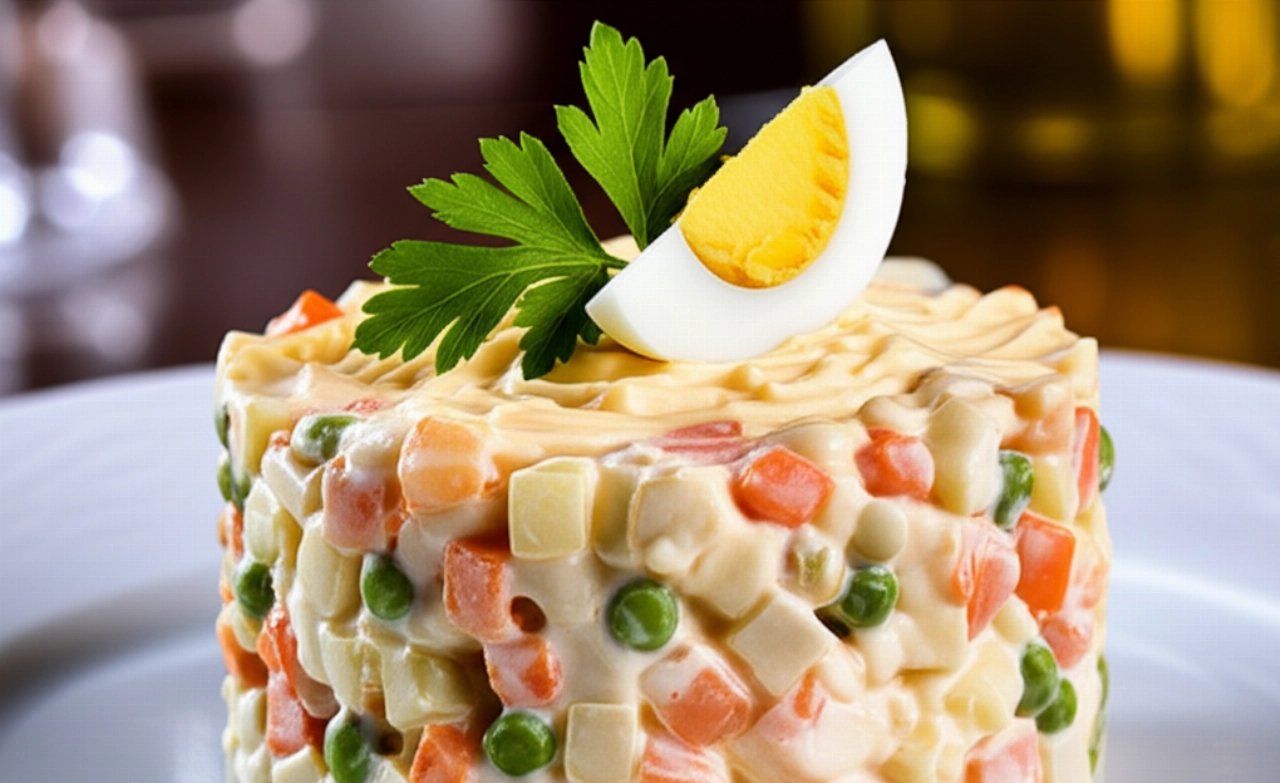Dreaming of serving an octopus and potato salad so tender it melts in your mouth, with an intoxicating scent of the sea and a balanced taste that takes you back to summer holidays? But how many times has the octopus turned out rubbery, or the salad bland, leaving you frustrated at having wasted precious time and ingredients?
Make yourself comfortable. Here on Search Recipes, you won't just find a list of ingredients, but the definitive guide, full of grandmother's tricks and tips, to prepare the softest and most flavorful Octopus and Potato Salad you've ever tasted. Success is guaranteed, and so are the compliments! I'll guide you step by step to get a super tender octopus and a perfectly balanced, fresh, and irresistible salad, without ever getting the cooking wrong.

Smart Ingredients: The Choice That Makes a Difference for Perfect Octopus
For an octopus and potato salad that is a true triumph of flavors and textures, the choice of ingredients is fundamental. It's not just about quantity, but about the quality and the right type for each element.
- Octopus: Choose a fresh octopus, but if you can't find one, don't despair! Frozen octopus is often the best choice to ensure tenderness. The freezing process breaks down the fibers, making it naturally softer. If using fresh, a trick is to freeze it for at least 24 hours and then slowly thaw it in the fridge before cooking.
- Potatoes: Opt for yellow-fleshed potatoes, such as new potatoes or red-skinned potatoes. They are less starchy and hold their shape better after cooking, without falling apart in the salad.
- Fresh Parsley: Don't underestimate the power of parsley! It must be fresh, washed, and finely chopped. Its herbaceous aroma is essential for the dish's freshness.
- Extra Virgin Olive Oil: A good EVO oil is the main dressing. Choose a quality one, fruity and delicate, that enhances the flavors without overpowering them.
- Lemon: Fresh lemon juice adds that bright, acidic note that balances the sweetness of the octopus and potatoes.
- Garlic (optional): A small clove, crushed and left to infuse in the oil for a few minutes, can add an extra aromatic touch.
- Salt and Pepper: Coarse salt for cooking the octopus and fine salt for the final seasoning. Freshly ground black pepper for a more intense aroma.
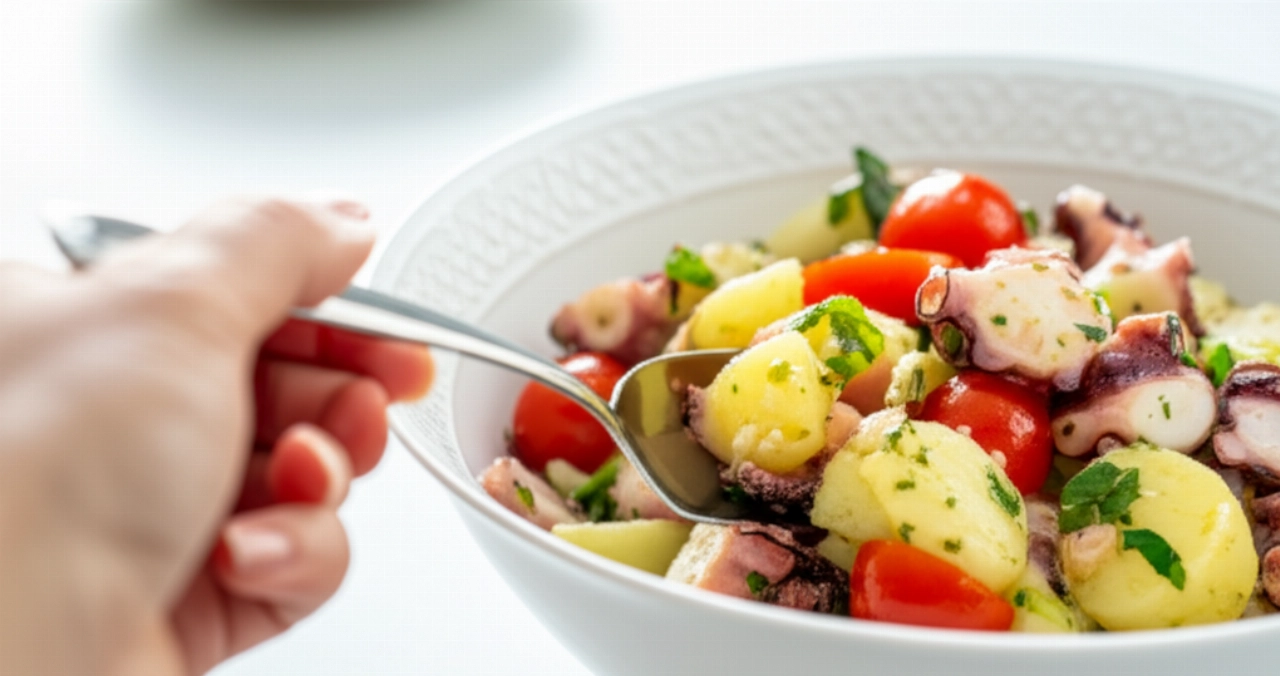
The 3 Common Mistakes That Make Octopus Rubbery (and How to Avoid Them)
Preparing a tender octopus is not an impossible task, but it requires attention to a few crucial details. Here are the most common mistakes and how to avoid them, for a melt-in-your-mouth result:
- Don't "Scare" the Octopus: This is a grandmother's trick that really works! Before immersing the octopus in boiling water, "scaring" it means dipping it in and out of the water 3-4 times consecutively. This causes the fibers to contract and then relax, making it more tender and causing the tips of the tentacles to curl gracefully.
- Cooking at Too High or Too Low Heat: Cooking should be slow and constant. Once the water boils and you've "scared" the octopus, lower the heat to a minimum, so the water barely simmers. Too vigorous cooking will make it rubbery, too weak will not cook it enough.
- Don't Cool the Octopus in Its Water: This is the most important secret for tenderness! Once cooked, do not drain the octopus immediately. Let it cool completely in its cooking water. This slow cooling process allows the fibers to relax further, absorbing moisture and remaining incredibly soft.
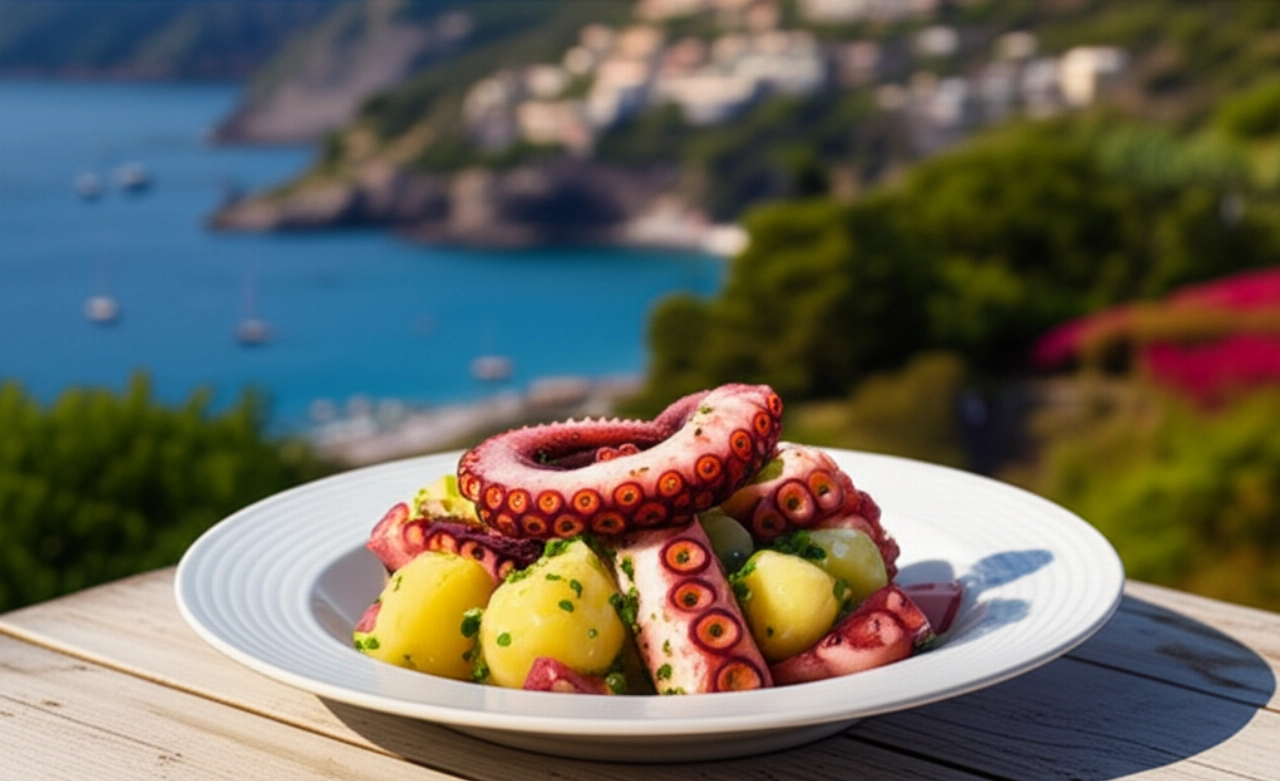
Grandma's Magic Touch: The Secret to a Super Tender Octopus
My grandmother, when preparing octopus salad, had a ritual: in addition to letting it cool in its water, she always added a bay leaf and a piece of lemon peel to the cooking water, along with the octopus. Not just for the aroma, but because she believed they helped to further tenderize the octopus and give it a delicate flavor. And I must say she was right! This small trick truly makes a difference, giving the octopus a more complex flavor and an almost velvety tenderness.
Let's Prepare Octopus and Potato Salad Together: The Step-by-Step Guide
Ingredients:
- 1 kg (2.2 lbs) octopus (fresh or frozen)
- 500 g (1.1 lbs) yellow-fleshed potatoes
- 1 lemon (juice and zest)
- A generous bunch of fresh parsley
- Quality extra virgin olive oil
- Coarse salt and fine salt
- Freshly ground black pepper
- (Optional) 1 bay leaf, 1 clove of garlic
Instructions:
- Prepare the Octopus: If you have fresh octopus, clean it thoroughly: remove the eyes, the beak (located in the center of the tentacles), and empty the sac. Rinse it very well under running water. If using frozen octopus, let it thaw completely in the refrigerator.
- The Perfect Octopus Cooking: Fill a large pot with plenty of water. Bring to a boil. When the water is boiling vigorously, "scare" the octopus: dip the tentacles for 3-4 seconds, then pull them out. Repeat 3-4 times; you'll see the tentacles curl. This step is crucial for tenderness.
- Slow Cooking: After "scaring" the octopus, immerse it completely in the boiling water. Add a bay leaf and a piece of lemon zest (only the yellow part). Lower the heat to a minimum, cover with a lid, and let it simmer gently. The cooking time varies depending on the size of the octopus: calculate about 20-25 minutes for every 500 grams (1.1 lbs) of octopus. For a 1 kg (2.2 lbs) octopus, it will take about 40-50 minutes.
- Doneness Test: To check for doneness, pierce the octopus with a fork at the base of a tentacle: if it goes in without resistance, it's perfectly cooked.
- Magical Cooling: Once cooked, turn off the heat and let the octopus cool completely in its cooking water. This step is fundamental for its softness.
- Prepare the Potatoes: While the octopus cools, wash the potatoes well and boil them with their skins in salted water until tender but still firm (about 20-30 minutes, depending on size). Peel them while they are still warm but manageable and cut them into chunks of about 2 cm (0.8 inches).
- Cut the Octopus: When the octopus is completely cold, drain it and cut it into pieces. You can cut the head into rings and the tentacles into slices or chunks, depending on your preference.
- Season the Salad: In a large bowl, combine the octopus and potatoes. Add the finely chopped fresh parsley. Squeeze the juice of half a lemon (or more, to taste) and drizzle with plenty of extra virgin olive oil. Season with salt and freshly ground black pepper to taste.
- Combine and Serve: Gently mix all ingredients to allow them to flavor well. Let the salad rest in the refrigerator for at least 30 minutes before serving, so the flavors meld perfectly. It's even better if prepared a few hours in advance!
Tips and Frequently Asked Questions about Octopus and Potato Salad
Here are some of the most common questions you might have, with answers to ensure even greater success:
Can I use frozen octopus?
Absolutely yes! In fact, as mentioned, frozen octopus is often more tender than fresh, because the freezing process breaks down the fibers. Just make sure to thaw it completely in the refrigerator before proceeding with cooking.
How do I know if the octopus is cooked?
The most reliable method is the fork test: pierce the base of a tentacle with a fork. If the fork goes in and out without resistance, the octopus is perfectly cooked. Do not overcook it, otherwise it will become rubbery.
Can I prepare the salad in advance?
Certainly! Octopus and potato salad is one of those dishes that gains flavor if prepared in advance. You can even prepare it the day before and store it in the refrigerator in an airtight container. The flavors will have time to meld and intensify.
Which type of potatoes should I use?
For this recipe, yellow-fleshed potatoes (such as new potatoes, red potatoes, or salad potatoes) are the best. They have a firmer texture and do not fall apart easily, maintaining their shape and consistency in the salad.
Can I add other ingredients?
Of course! If you want to enrich your salad, you can add halved cherry tomatoes, pitted Taggiasca olives, desalted capers, or even some thinly sliced celery stalks for a crunchy note. Feel free to experiment, but always start with this foolproof base!
A Seafood Masterpiece, Simple and Foolproof
There you have it! Now you no longer just have a recipe, but all the secrets to bring to the table an Octopus and Potato Salad that everyone will fall in love with, a true triumph of flavors and tenderness. A fresh and light seafood appetizer, perfect for warm summer days or as a light main course.
Don't be afraid to get cooking. With these tips, success is guaranteed. Get ready to receive compliments and requests for seconds! Cooking is an act of love, and with this recipe, your love for good food will be evident in every bite.
Have you tried our recipe? We're curious to know how it went! Leave a comment below, tell us about your experience, or share a photo on Instagram by tagging @CercaRicette.it. If you loved this seafood recipe, don't miss our guide for perfect Clam Spaghetti or a fresh side dish like Caprese Salad.

